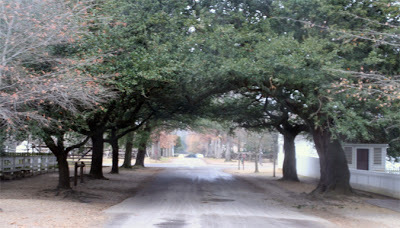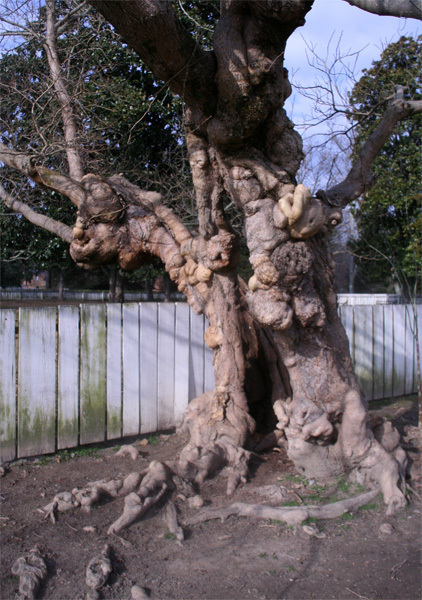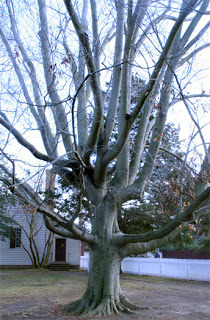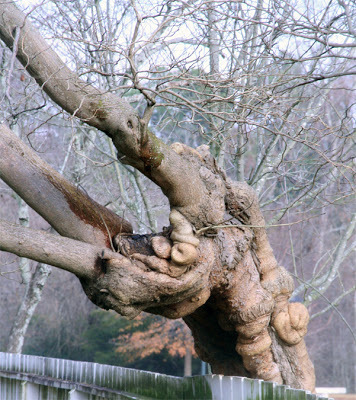Robert Schrag, a regular contributor to Senior Correspondent, documents the process of undergoing a stem cell transplant in response to multiple myeloma.
Tuesday, Dec. 11, 2012
In these last few days before I go "inside," I find myself storing up favorite sights and smells and sounds that, for my own good, I must shun for a little while. This is a good place for the gathering of such treasures of pleasure.
It has become our habit to visit Colonial Williamsburg during the first week of December. It encompasses our anniversary, and, falling as it does between the Twin Peaks of Thanksgiving and Christmas, the number of tourists trooping around is greatly reduced. Of course, we do not see ourselves as tourists. Since Christine has been coming here since she was a child, she feels like a native who has, somehow and unfairly, been condemned to live in the 21st century. My history with the place is less than a decade. My relationship with the shaded cobbled streets is more that of a time-traveling anthropologist who has gone native. I find myself chatting with the skilled enactors who people the locale as though it really is summer of 1775.
I do, however, have a less obvious reason for treasuring these winter visits. Not that I need a secret yen for December visits after the one summer visit when we and 2 billion other folks braved temperatures in low 100s to savor the Nation's birthday, here where it all began. The 2 billion is an exaggeration, though it did not feel like it at the time. The low 100s is the god's honest truth, look it up — probably around 2006 or so. People were melting into blobs on the cobblestone, horses were stealing bottled water out of baby carriages. More exaggerations, but you get the idea. So cool temperatures, legal outdoor fires, and the smell of wood smoke reminding me of the autumns and winters of my youth are reasons enough to drive up the interstate. But as Billy Mays used to say: "Wait! There's More!"
The leaves have fallen. Yeah, yeah. I know. They tend to do that in December here on the Virginia Peninsula. What you probably don't realize that during colonial times that was not the case. Don't get me wrong, leaves still fell in December — there were just no trees here on the Virginia Peninsula. Think oil in Ohio. When Rockefeller — who later, just to keep a balanced narrative going here, funded the restoration of Williamsburg — founded Standard Oil up around Cleveland, he wasn't pumping Saudi crude. He was pumping Cleveland crude, and he kept pumping until it was gone. Same thing here in Williamsburg, capital of the largest, wealthiest colony in the Americas. It was a wood-based economy. You built with it, houses, tables, utensils. And you heated with it, and you cooked with it. And you cut it down, right outside the back door, until one day you walked out the back door, looked around and — damn, there was no more forest. From the York River to the James River — no wood, no trees, no forest!
So, being a wood-based economy they eventually planted more trees. And since oak was the wood of preference for variety of uses, they planted a lot of oaks. Over the last 200 years those oaks — absent in the heady days of the revolution — have colonized Colonial Williamsburg. They are quite impressive when fully leafed — and we were more than thankful for their shade on that triple-digit summer day. But when they shed their leaves we can see them for what they truly are: the Gnomes of Williamsburg. I am still looking for the documents that prove that Tolkien visited the peninsula one winter. They are out there somewhere. How can they not be? He wanted Ents? Living trees, sentient trees that guard and retain the essence of a special place. Here, here are they are, the Gnomes of Williamsburg.
 They take on several distinct guises. First there is the Obvious Oak. We are stunned by its blend of size, propriety and function. Compare its grandeur, to both the house beside it and the horseman in the foreground, and yet, it seeks only to serve:
They take on several distinct guises. First there is the Obvious Oak. We are stunned by its blend of size, propriety and function. Compare its grandeur, to both the house beside it and the horseman in the foreground, and yet, it seeks only to serve:
 And that is one of the common functions of the Gnomes of Williamsburg, to serve and to shelter:
And that is one of the common functions of the Gnomes of Williamsburg, to serve and to shelter:
One is never far from a shelter from the storm. A scurry will leave you, perhaps not fully dry, yet comfortable still, and a partial respite often calls us to consider that which is present, rather than that which is wanting.
 Still these wonders can be seen when the tree are full in leaf. Winter brings the true secrets of the Gnomes. This one is, I believe, their leader:
Still these wonders can be seen when the tree are full in leaf. Winter brings the true secrets of the Gnomes. This one is, I believe, their leader:
 While the gnome presents a ferocious demeanor, I believe (s)he to be a thoughtful entity, a retainer of wisdom who teaches the younger gnomes their true purpose. The most common of these tasks is "beechseeching," calling upon us — their swifter but more callow kin — to realize the value of the gnomes. To the left is one of the Beechseechers.
While the gnome presents a ferocious demeanor, I believe (s)he to be a thoughtful entity, a retainer of wisdom who teaches the younger gnomes their true purpose. The most common of these tasks is "beechseeching," calling upon us — their swifter but more callow kin — to realize the value of the gnomes. To the left is one of the Beechseechers.
 This final image makes me wonder just how "rooted" these gnomes really are. Is it a Triceragnome? A Unignome? And can something so poised for flight be truly stationary?
This final image makes me wonder just how "rooted" these gnomes really are. Is it a Triceragnome? A Unignome? And can something so poised for flight be truly stationary?
So, tomorrow I go "inside." My stay holds the potential for passivity. But always we take with us our eyes, our ears, our creative selves. I will try to use them to serve us all.








